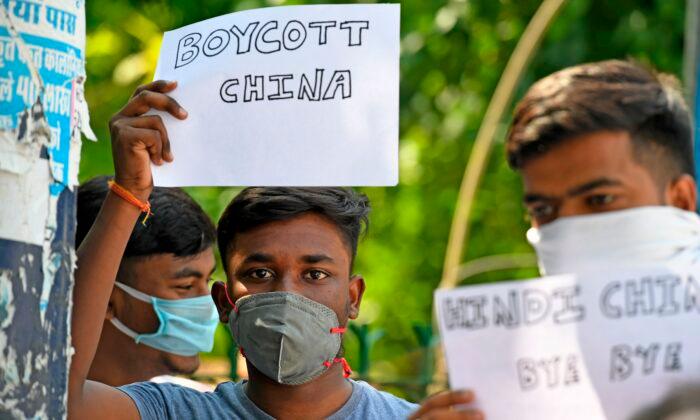The recent India–China border dispute and violence has accelerated calls within India to “decouple” economically from China, especially on the technology front.
For the uninitiated, bilateral India–China trade stood at around $93 billion at 2019, as India imports a significant amount of high technology, automotive supplies, pharmaceuticals, and industrial products from China.
There also have been increasing calls to boycott Chinese goods and services, arising from both the CCP virus pandemic and the recent border clash.
On June 17, India’s intelligence agencies asked the Modi government to block or advise against the usage of 53 smartphone apps that are made by Chinese companies or linked to China.
Focus on Smartphones
A major battleground on this effort for India will be smartphones.While most of such smartphones sold in India are made in and imported from China, the Indian government is looking to change that dynamic. In early June, India announced a 500 billion rupee ($6.6 billion) program to incentivize manufacturers to set up facilities in India.
One company looking to take advantage of the program is Indian phone manufacturer Micromax. The firm was the No. 1 smartphone brand in India about five years ago, before Chinese brands entered the Indian market by offering cheap phones and elbowed local brands from the top spots.
The deflationary effects of cheap phones made by Chinese manufacturers with scale had a devastating impact on domestic smartphone makers. Intex pivoted away from making phones and now focuses on other electronics, while another former top phone maker, Lava, still exists but is now focused on sales in smaller towns that the Chinese brands have overlooked.
Even Micromax today assembles most of its phones in China to save costs.
Micromax used its Twitter account to tell its followers on June 18 that the company is working on new smartphone devices to be assembled in India, with hashtags #MadeByIndian and #MadeForIndian. Micromax reportedly has seven new devices in the pipeline, a retail industry source told the Indian news site Indian Express.
Despite the anti-China sentiment in India, it will be difficult for consumers to pivot away from Chinese smartphones. Chinese brands comprise 75 percent of the market in India and dominate the important sub-$200 price segment.
“We don’t have anything,” Navkendar Singh, research director with IDC India, told Indian Express. “I don’t expect Micromax, Intex, and Lava to suddenly start making great devices and giving value across ecosystem products.”





